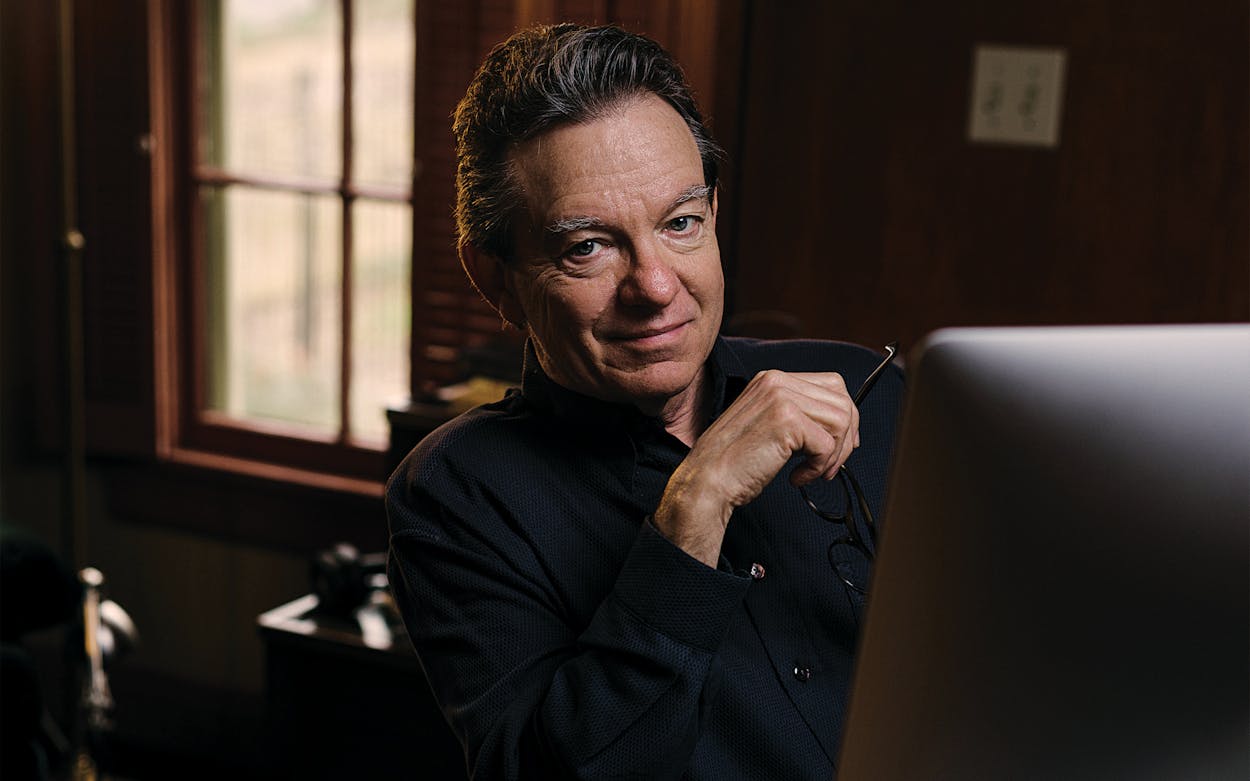Reading Lawrence Wright’s new pandemic novel, The End of October, is a surreal experience. In the book, a terrifying new virus spreads rapidly across the globe. Politicians initially brush it off as just like the flu, and there’s a debate over whether people are overreacting. Soon millions are infected and everyone is sent home while scientists scramble to develop a vaccine. Grocery stores are mobbed, there’s a shortage of masks and ventilators, and leaders argue about when and how to reopen society. Wright predicted our current reality with uncanny precision, and as a reader that’s both oddly satisfying—wow, how did he know they’d be setting up tent hospitals in parking lots?—and disturbing.
One key difference is that the fictional virus is much more deadly than the real one, with a 50 percent mortality rate. By the book’s midpoint, near-total societal collapse has set in, and our hero, mild-mannered scientist Henry Parsons, just wants to know if his family is still alive. A gruesome scene in which a character is eaten by her cats prompts both anxiety and reassurance: at least things in real life could never get that bad—er, could they?
The Austin author, a former Texas Monthly staffer, draws on the meticulous research skills that earned him a Pulitzer Prize for nonfiction. He brings the same obsessive level of detail to his second novel that he did to nonfiction works such as The Looming Tower, Going Clear, and God Save Texas. The End of October also offers a rich history of pandemics, from the salmonella outbreak that destroyed the Aztec empire to the 1918 flu. Wright spoke with Texas Monthly about what it’s like to release a pandemic novel during a pandemic.
It’s clear that you did extensive research for this book. What did that process look like?
I got so caught up in the lore of public health and its history. Health and disease are not normally considered to be a big part of the sweep of history. It’s all about wars and depression and colonization. But disease is a very influential factor in human history. I also liked being in the world that these public health officials live in—the epidemiologists, virologists, and microbiologists. They’re so brilliant and so courageous.
There are a lot of unnerving parallels to reality in the book, but the one that feels most timely is the political situation. On Monday, Governor Greg Abbott announced that he’s allowing stores and restaurants to reopen, and many people are worried about a second wave of infections—which is exactly what happens in your book. How has it felt to watch that play out?
I don’t want any more parallels with the book to occur! It’s unnerving to read the newspaper and feel like I’m reading the next chapter of my book. The book is meant as a kind of cry of warning, and I didn’t expect it to come out in the middle of a pandemic.
The idea of a second wave comes from looking at how influenza behaves. Coronavirus may behave like influenza and return in the fall, or it may not. It’s similar to influenza in that it is an RNA virus, and that means it’s able to mutate. But this one so far has seemed pretty stable. The coronavirus is an eccentric and puzzling disease—we’re learning so much about it, but it doesn’t look like anything I’ve studied before.
Surely we’ll see a bump in coronavirus cases as the Texas economy starts to reopen.
We will. We have to measure the danger to public health against the danger to the economy, and there’s risk involved. Governor Abbott’s plan is dependent on having widespread testing. The governor says he feels Texas will perform that adequately—but it has to, or we’re going to be in big trouble.
Once the fictional pandemic has led to a media collapse, Austin conspiracy theorist Alex Jones is the last voice left on the airwaves. Can you talk about the role of misinformation and conspiracy theories in a pandemic?
In a truly dysfunctional world, Alex Jones would be king. The most important thing for government to do in the face of a pandemic is to tell the truth. When they spin, dodge, or bury the truth, it creates distrust—and in that void conspiracy theories prosper. That’s what’s happening right now. People are confused, and there’s an absence of leadership. So naturally, explanations arise without any basis. It’s dangerous, just as it’s very dangerous to suggest off-the-cuff that drinking disinfectant would be a treatment.
That’s one area in which reality seems worse than fiction. The president in The End of October mostly stays silent about the pandemic, while ours has been actively peddling misinformation.
It’s really dismaying. It’s one thing to have it come out that way in the novel, but it’s really sad to see it happen in real life.
Another similarity is the rise in hate crimes. In the book, the virus breaks out at the Hajj in Mecca, and then Muslims are targeted. In reality, there’s been a surge in hate crimes against Asian Americans. Is that something else that’s happened throughout history?
Oh, yes. Whenever you have a formidable disease outbreak, it’s freighted with accusation and shame and stigma and blame. If you go back to the Black Death in the fourteenth century, thousands of Jews were burned at the stake, accused of poisoning the wells. In the Renaissance, venereal disease was called “the French disease” by the Italians and “the Neapolitan disease” by the French. It’s always the case that people want to blame someone else for their misfortune. And now we see the United States accusing China of cooking up the disease in a lab or letting it escape somehow, just as the Russians, the Chinese, and the Iranians are saying we did it, that it’s a bioweapon. These are very dangerous, unproven accusations that could have horrible consequences.
What kind of consequences?
In the novel, I take the geopolitical rivalries that are obvious already and see what happens if I stress those relationships with a pandemic. Those fractures get wider, the hostilities get stronger, and then war can break out.
The attempt, especially by Russians and to a lesser extent by China, right now to blame the United States for this disease—it really troubles me. I think that the degree to which ordinary Americans now hate the Russians and the Chinese because of this behavior is really quite high. So the idea of retaliating in some fashion is bound to arise, and that’s something we’ll have to confront.
What do you recommend to readers seeking more pandemic stories?
The one most appropriate for Texans is Pale Horse, Pale Rider by Katherine Anne Porter. She was the first great writer Texas produced, and the novel reflects her own experience. She was a young reporter in Denver in 1918 when she got the flu, and she was deathly ill. Her newspaper actually set her obituary in type. When she awakened she was bald, and her hair grew back white for the rest of her life. But out of that tormenting experience she wrote a great novel.
Many pandemic narratives follow a trajectory that concludes with life returning to normal. Your book doesn’t quite end that way. What do you think our new normal will look like?
Wars, depressions, and pandemics expose the society that you’re living in. If you look back at the Black Death, it closed the door on the Dark Ages and opened the door to the Renaissance. If you look at the Great Depression, American society was completely reshaped because of it, made much stronger and more cohesive. With World War II, America took another great leap and became the most powerful country in the world. So we’ve had these disasters placed in front of us that we turned into great successes.
On the other hand, 9/11 was a moment when I remember feeling so strongly that we would have to stand for something now, that the America that our parents gave us had declined in some ways and we had to reclaim it. And yet what we did as a country was to invade Iraq, a catastrophic mistake. We’re at a fork in the road where we can remedy the faults in our society and make a better country, or we can ignore that opportunity and make a fatal mistake.
- More About:
- Politics & Policy
- Books
- Lawrence Wright








